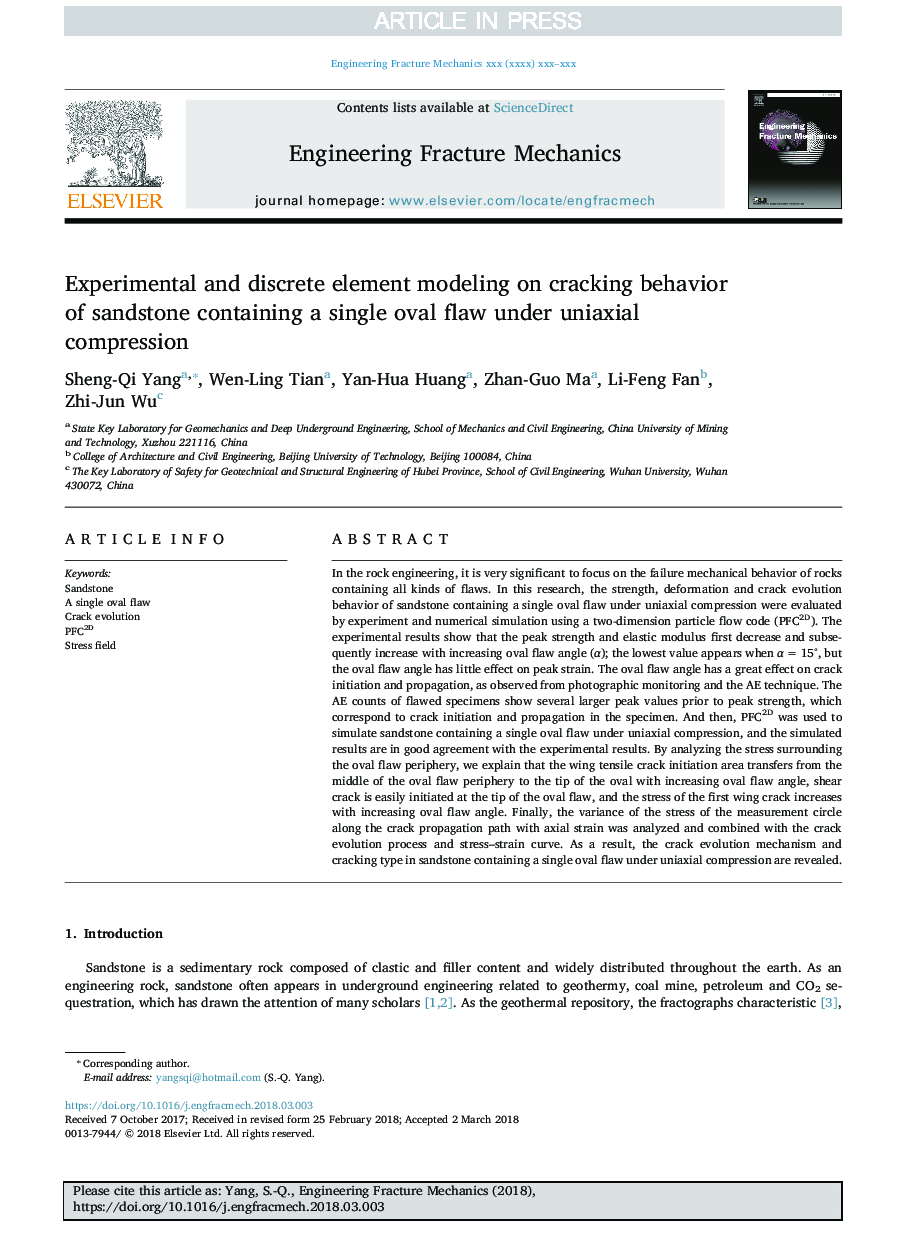| Article ID | Journal | Published Year | Pages | File Type |
|---|---|---|---|---|
| 7168880 | Engineering Fracture Mechanics | 2018 | 21 Pages |
Abstract
In the rock engineering, it is very significant to focus on the failure mechanical behavior of rocks containing all kinds of flaws. In this research, the strength, deformation and crack evolution behavior of sandstone containing a single oval flaw under uniaxial compression were evaluated by experiment and numerical simulation using a two-dimension particle flow code (PFC2D). The experimental results show that the peak strength and elastic modulus first decrease and subsequently increase with increasing oval flaw angle (α); the lowest value appears when αâ¯=â¯15°, but the oval flaw angle has little effect on peak strain. The oval flaw angle has a great effect on crack initiation and propagation, as observed from photographic monitoring and the AE technique. The AE counts of flawed specimens show several larger peak values prior to peak strength, which correspond to crack initiation and propagation in the specimen. And then, PFC2D was used to simulate sandstone containing a single oval flaw under uniaxial compression, and the simulated results are in good agreement with the experimental results. By analyzing the stress surrounding the oval flaw periphery, we explain that the wing tensile crack initiation area transfers from the middle of the oval flaw periphery to the tip of the oval with increasing oval flaw angle, shear crack is easily initiated at the tip of the oval flaw, and the stress of the first wing crack increases with increasing oval flaw angle. Finally, the variance of the stress of the measurement circle along the crack propagation path with axial strain was analyzed and combined with the crack evolution process and stress-strain curve. As a result, the crack evolution mechanism and cracking type in sandstone containing a single oval flaw under uniaxial compression are revealed.
Related Topics
Physical Sciences and Engineering
Engineering
Mechanical Engineering
Authors
Sheng-Qi Yang, Wen-Ling Tian, Yan-Hua Huang, Zhan-Guo Ma, Li-Feng Fan, Zhi-Jun Wu,
